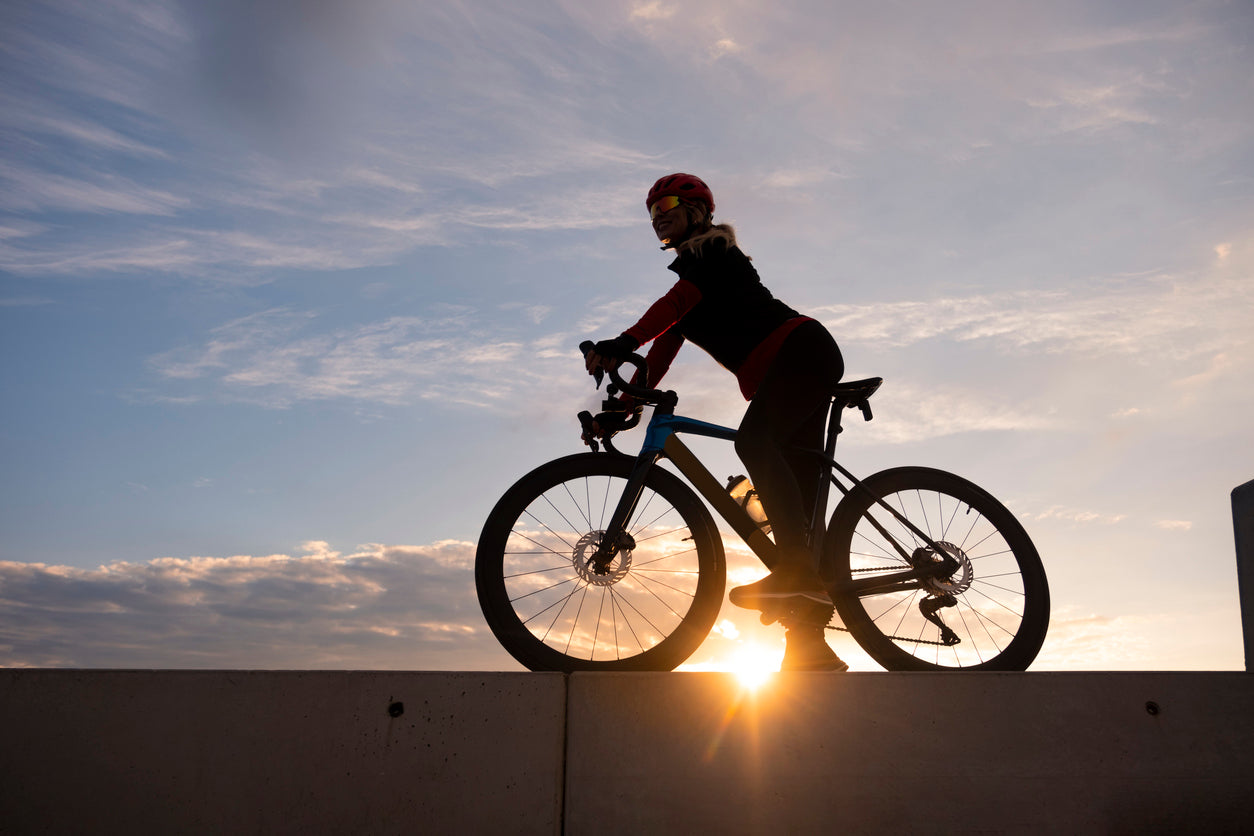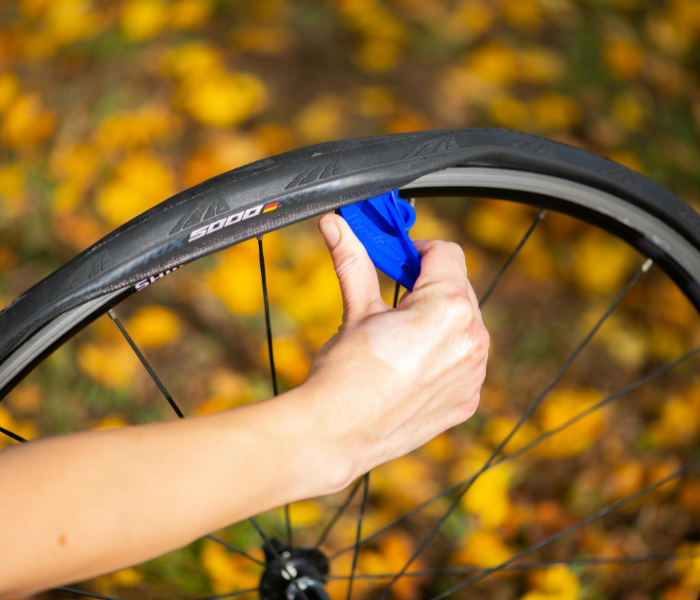So, you're ready to roll!
Cycling is fantastic for your body, mind and maybe even your commute. But like any activity, having the right gear can make a world of difference. And when it comes to cycling kit, there's a lot to consider. From figuring out the perfect chamois to deciphering the mysteries of bib shorts, this guide is here to answer all your burning questions and help you build a cycling wardrobe that's as comfortable as it is functional.
Let's start with the foundation: fit. Finding the right size in cycling kit can feel like navigating a minefield. Too tight, and you're constricted and uncomfortable. Too loose, and you're dealing with chafing and potential drag. The key is to pay attention to the manufacturer's size charts, as they can vary massively between brands. Don't just assume your regular clothing size will translate directly. It's often a good idea to try things on if possible, or at least check return policies. And don't be afraid to ask for help at your local bike shop! They're usually pros at fitting cyclists out in kit!
One area where fit is especially crucial is cycling shorts. These are your contact point with the saddle, so comfort is paramount. A well-fitting pair of shorts should feel snug but not restrictive. The chamois, that padded insert, is your friend. It's designed to provide cushioning and reduce friction. Women-specific chamois are designed to accommodate the female anatomy, offering support where it's needed most. While some women find they can get away with men's or unisex chamois, most will find a dedicated women's version much more comfortable, especially for longer rides.
Chafing is the bane of many cyclists' existence. It's usually caused by friction between your skin and your clothing. A good chamois, proper fit, and the right fabric can all help minimise chafing. Look for shorts made from moisture-wicking materials that will keep you dry. And if you're prone to chafing, consider using chamois cream for extra protection. It's like a lubricant for your nether regions, and trust me, it's a game-changer. A GAME CHANGER!! We love the Muc Off chamois cream……
Now, let's talk about bras. Can you wear a regular bra for cycling? Sure, you can. But a cycling/sport-specific bra is designed with features that make it a better choice. They often offer more support and are made from breathable fabrics that wick away sweat. They may also have wider straps to distribute pressure more evenly. Whether or not you need one depends on your personal preference and the type of riding you do. For longer, more intense rides, a cycling/sport-specific bra is definitely worth considering.
Staying up top, cycling jerseys are designed to be functional as well as stylish. They're typically made from lightweight, moisture-wicking fabrics and often have a longer back hem to provide coverage when you're bent over in the riding position. How should they fit? Generally, a snug fit is preferred, as this helps with aerodynamics and prevents the jersey from flapping in the wind. However, you don't want it to be so tight that it restricts your movement.
"Race fit" jerseys are the most form-fitting, while "club fit" jerseys offer a bit more room and also allow you to cram more snackies and stuff in your rear pockets!
What about those shorts with the built-in suspenders type thingies, also known as bib shorts? They might look a little intimidating at first, but many cyclists swear by them. The bibs help to keep the shorts in place and prevent them from riding down, which can be a common problem with traditional waistbands. They also eliminate any potential gap between your shorts and jersey, preventing drafts and keeping your core warmer. As for bathroom breaks, some bib shorts are designed with a "drop tail" or other mechanism that makes it relatively easy to, well, answer natures call.
Fabric is a crucial factor in cycling clothing. For hot weather, look for lightweight, breathable fabrics that will help you stay cool and dry. Moisture-wicking materials like polyester and merino wool are excellent choices. In colder weather, layering is key. Start with a base layer that will wick away sweat, add an insulating mid-layer, and top it off with a waterproof and windproof outer layer. And speaking of layers, let's talk about arm warmers, leg warmers and knee warmers. These are fantastic for riding in changeable weather. They're easy to put on and take off, and they allow you to adapt your clothing to changing temperatures. They're also great for those early morning or evening rides when it's a little chilly.
Cycling jackets are another essential piece of gear, especially if you live in an area with unpredictable weather (oh hey Ireland….we looking at YOU!). Look for a jacket that is waterproof, windproof and breathable. Packability is also important, as you'll likely want to be able to stow it away when the weather improves. We happen to know of an especially awesome waterproof jacket being sold by an especially lovely womens cycling clothing company........you could find it HERE....... (shameless product plug alert!!!). Gloves are often overlooked, but they can make a big difference in comfort, especially on longer rides. They provide cushioning for your hands and help to prevent numbness and tingling. They can also protect your hands in the event of a fall.
Socks might seem like a minor detail, but cycling-specific socks are designed to wick away moisture and keep your feet cool and dry. Wool socks are a great option, even in warm weather, as they are naturally moisture-wicking and odour-resistant.
Now, let's tackle some more specific questions.
What's the difference between mountain bike shorts and road bike shorts? Generally, mountain bike shorts are looser fitting and more durable, as they're designed to withstand the rigours of off-road riding. Road bike shorts are typically tighter and more aerodynamic.
Do you need special cycling shoes? While you can certainly ride in regular sneakers, cycling shoes offer several advantages. They have stiff soles that transfer power more efficiently to the pedals, and they often clip into the pedals, allowing you to generate power on both the upstroke and the downstroke. Choosing the right cycling shoes is a whole other topic, but the key is to find a pair that fits well and is compatible with your pedals. We would suggest a visit to your local bike shop and they can help you figure it all out if your new to these clippy-in-shoe-thingies. Once you’re a bit more confident about what you’d like - the choice online is massive but it is always good to support your local shops.
Caring for your cycling clothes is important for keeping them in good condition. Always follow the manufacturer's instructions, but generally, you should wash your cycling clothes in cool-ish water and avoid using fabric softener. Hang them to dry, as putting them in the dryer can damage the fabrics and shorten their lifespan.
How often should you replace your cycling shorts? This depends on how often you ride and how well you care for them. Generally, you can expect to get a few seasons out of a good pair of shorts. If the chamois starts to wear out or the fabric loses its elasticity, it's time for a new pair.
Budget is always a consideration. Cycling clothing can be expensive, but it doesn't have to be. There are many good budget-friendly brands available. Look for sales and discounts, and don't be afraid to ask for recommendations at your local bike shop. Investing in a few key pieces, like a good pair of shorts and a comfortable jersey, is a good starting point.
Building a cycling wardrobe takes time and experimentation. Don't be afraid to try different brands and styles until you find what works best for you. And most importantly, don't forget to have fun out there on the bike!
See you on the road soon friends……X




